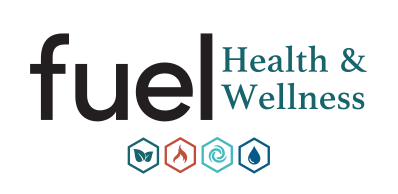Table of Contents:
What is Dry Needling?
The Basics of Dry Needling and Its History
Dry Needling vs. Acupuncture
Piriformis Syndrome: A Quick Overview
How Dry Needling Can Help with Piriformis Syndrome
The Mechanics: The Power of the Needle
Benefits Specific to Piriformis Syndrome
What is Dry Needling?
In recent years, a therapeutic technique known as dry needling has garnered significant attention in the realm of physical therapy and pain management. But what exactly is it?
The Basics of Dry Needling and Its History
Dry needling is a modern treatment designed to alleviate muscular pain. Its primary focus is on trigger points, which are tight knots of muscle fibers that can form after injuries or from overuse. The procedure involves inserting thin needles into these trigger points, helping to release the tension and reduce pain. The roots of dry needling trace back to the 20th century when Dr. Janet Travell and Dr. David Simons began researching the impact of injecting substances into trigger points. They found that the act of needle insertion, even without any substance, could provide relief – thus the term “dry” needling.
Dry Needling vs. Acupuncture
At a glance, dry needling might be confused with acupuncture, given the use of needles in both therapies. However, they stem from vastly different philosophies and methodologies. Acupuncture is an ancient Chinese therapy, grounded in Traditional Chinese Medicine. It targets specific points, known as ‘meridians’, to balance the body’s energy or “Qi”. Dry needling, on the other hand, is rooted in Western anatomical and neurophysiological principles and specifically targets muscle pain and trigger points.
Piriformis Syndrome: A Quick Overview
Before diving into how dry needling can help, it’s crucial to understand the condition at hand – piriformis syndrome.
Understanding Piriformis Syndrome and Its Symptoms
The piriformis is a small muscle located deep within the buttocks, running diagonally from the lower spine to the upper thigh bone. When this muscle spasms or becomes tight, it can press on the sciatic nerve, leading to piriformis syndrome. Common symptoms include:
- Pain in the buttocks or hips.
- Tingling or numbness in the leg.
- Difficulty sitting for extended periods.
Causes and Risk Factors
Several factors can lead to the development of piriformis syndrome:
- Overuse from activities like running or cycling.
- Sitting for extended periods.
- Direct trauma or injury to the buttocks.
- Anatomical variations, where the sciatic nerve might run through the piriformis muscle rather than beneath it.
How Dry Needling Can Help with Piriformis Syndrome
Given the muscle-centric nature of piriformis syndrome, dry needling offers a promising solution by restoring proper length tension relationship of the muscle fibers and having an effect on the neuromuscular junction.
The Mechanics: The Power of the Needle
Inserting needles into the tight piriformis muscle or its trigger points helps in several ways. First, it causes a local twitch response, a brief involuntary contraction followed by immediate relaxation. This relaxation helps reduce muscle tension and pain. Additionally, the process enhances blood flow to the region, promoting healing.
Benefits Specific to Piriformis Syndrome
For patients with piriformis syndrome, dry needling can:
- Provide immediate relief from pain and tightness.
- Improve range of motion.
- Reduce the pressure on the sciatic nerve.
- Speed up recovery and reduce the likelihood of recurrence.
In conclusion, while piriformis syndrome can be a painful and restrictive condition, therapeutic techniques like dry needling offer hope. By understanding the core principles and benefits, patients can make informed decisions and work toward pain-free living. Always consult a healthcare professional such as a physical therapist that is specifically trained in dry needling before undergoing any therapy.

